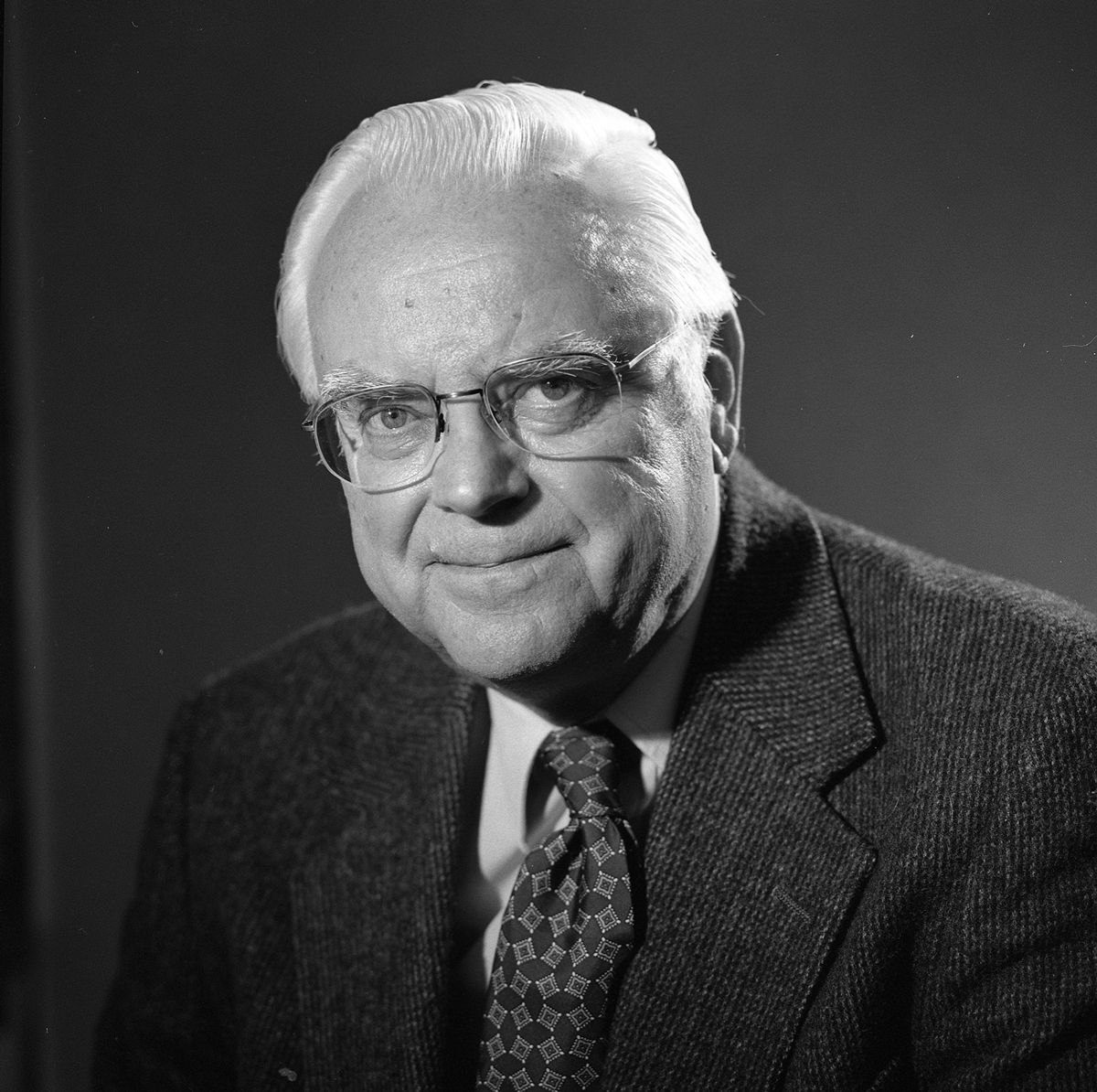On Nov. 1, 1961, astronomer and astrophysicist Dr. Frank Drake formulated an equation that would forever change the way scientists approach the question of whether or not humanity is alone in the universe–the Drake Equation. By creating a math problem with variables related to the probabilities of the various conditions needed for life, Drake created a way to estimate how many extraterrestrial civilizations capable of communication could exist within our galaxy.
Drake passed away Sept. 2, 2022, at the age of 92, leaving a legacy that changed the way scientists consider the possibilities for life beyond Earth and how to search for it. On the anniversary of the Drake Equation, some astronomers and astrobiologists who currently or previously worked at NASA’s Ames Research Center in California’s Silicon Valley shared their reflections on Drake’s life, how the Drake Equation inspired and influenced their work, and what’s next in the search for life beyond Earth.
Penelope Boston is an astrobiologist and associate director for Science Business Development at Ames, and previously was the director of the NASA Astrobiology Institute.
Melissa Kirven-Brooks is an astrobiologist and the NASA Astrobiology Program and the Deputy Chief of the Exobiology Branch at Ames.
Thomas Roellig is an astrophysicist at Ames and previously served as Chief of the Astrophysics Branch.
William Borucki is a space scientist and was the primary investigator for NASA’s Kepler Space Telescope, which discovered there are more planets than stars in our galaxy.
When did you first learn about the Drake Equation, and how did it influence or inspire your career?
Penelope Boston: When I was eight years old, I saw an article in a kid newspaper. The article was by Frank Drake about the Drake Equation. Already a science fiction reader, I was instantly aflame with the idea that something as exciting as whether there were intelligent beings elsewhere in the universe could be analyzed systematically by looking at each factor in a mathematical equation. I had not yet hit algebra or calculus, but the magic of such a power of math hit me between the eyes. I was well and truly hooked on both simultaneously!
Thomas Roellig: I was actually a graduate student at Cornell University when Frank was a professor there. I first heard of the Drake Equation from him in one of his lectures in his “Introduction to Radio Astronomy” course. Frank was a very good lecturer, and the equation made a lot of sense to me at the time, although of course we did not know the values of many of the coefficients back then as well as we do now.
Melissa Kirven-Brooks: I think that I heard about the Drake Equation when I was in high school, and it impressed me in providing a highly accessible way to think about the probability of life elsewhere.
William Borucki: When I heard about the Drake Equation, I was delighted to see the change from vague speculations about the extent of life in our universe replaced with a set of individual factors that could be investigated and measured.
Where do you see Dr. Frank Drake’s influence on the fields of astrobiology and astronomy?
Thomas Roellig: As an articulate and energetic speaker and writer, Frank Drake was an early leader in this field with a profound influence.
Bill Borucki: Frank Drake and his Equation have encouraged studies in astrophysics, astrobiology, and other science by pointing out the need for investigations in many areas of study such as the study of the habitability of various types of planets and planetary conditions that might allow life to flourish, extremophile life that exists on Earth, and the study of the longevity of civilizations.
Frank Drake was also instrumental in the formation of the SETI Institute that conducts the search for intelligent life by using large radio telescopes and optical systems. The SETI Institute scientists target the stars that have been identified by space missions as having planets and it has also contributed many of the scientists that made the Kepler Mission a success.
Penelope Boston: When Frank first began his work on SETI, it was not considered a legitimate area of study, but borderline crank stuff. The UFO craze of the early space age made the topic suspect. Frank’s steady and careful scientifically based work on the topic gradually helped to change such narrow-minded attitudes to the point that we are now seeing a relatively large number of scientists in both astronomy/astrophysics, astrobiology, and other fields engaged in the work.
Melissa Kirven-Brooks: The SETI Institute and the Berkeley SETI Research Center are definite offshoots of this work. By its nature to inspire discussion of extraterrestrial life, his equation started conversations amongst non-specialists and the general public that expanded thoughts and worldviews.
How did Dr. Frank Drake impact your personal or professional life?
Melissa Kirven-Brooks: Part of my interest in astrobiology arose from considering what type of technology would be required to determine some of the coefficients. I am a biologist but chose a graduate school with a strong engineering influence and eventually came to Ames to work on hardware development and testing for the International Space Station. I shifted to the NASA Astrobiology Institute in 2005 and have been indirectly supporting astrobiology research since then, now working for the NASA Astrobiology Program and the Deputy Chief of the Exobiology Branch.
Penelope Boston: I learned of his work when still a child. Later, as a scientist myself, I met Frank on a number of occasions at various meetings and discussed the latest SETI efforts as they arose. When I served on the NASA Innovative Advanced Concepts program external committee with Frank, I got to know him very much better, which was a treat! He was a calm, sensible, clever, and kind soul, a perfect example of how a highly driven and accomplished person can still be a wonderful human being.
What is the future of how the Drake Equation is studied and used?
Bill Borucki: Two factors in the Drake Equation are the fraction of stars that have planets and the fraction of planets that are in the habitable zone where life might be possible. The Kepler Mission and follow-on space missions show that there are many billions of such planets in our galaxy alone. Given those results and assumptions of modest values for the other factors, the Drake Equation suggests that the number of communicating civilizations could be substantial. Contact with such civilizations requires only continued technical progress and patience.
Thomas Roellig: Frank always stressed that the greatest unknown coefficient was “L” – the length of the time that a civilization could be detected remotely. With the dangers of nuclear war, global warming, and over-population we are conducting an experiment on that time length here and now on Earth.
Penelope Boston: The equation serves as a flagpole around which people can debate their science and attitudes towards the issues of other intelligences in our galaxy and how we might continue to look for evidence of their presence. The equation itself, has had several modifications over the years put forward by other thinkers, but at rock bottom it nailed all of the essential variables involved. Some of those variables have already been given approximate numerical values because of advances in science. Most notably, we now have a fairly good grasp of the likely number of total exoplanets to be expected in the Milky Way galaxy, and investigations into the distributions of planetary types are advancing steadily as our capabilities expand with James Webb Space Telescope (JWST) and future telescopic missions to come.
Melissa Kirven-Brooks: Perhaps with JWST now active, and other telescopes and instrumentation under development, we may have many more Drake Equation solutions in the next decade or two.
Dr. Frank Drake impacted these scientists and countless others across NASA, and the world. As the search for life beyond Earth continues at NASA, SETI, and other organizations, we celebrate the equation that started so much of this work and carry forward Dr. Drake’s legacy.
“Because of Drake’s work, humanity will always be a species that has reached beyond the confines of our stellar neighborhood,” said Eugene Tu, Ames’ center director, upon Dr. Drake’s passing. “In this way, his voice carries on — speaking on humanity’s behalf with humility and grace, giving us all a way to be heard in the cosmos.”




























